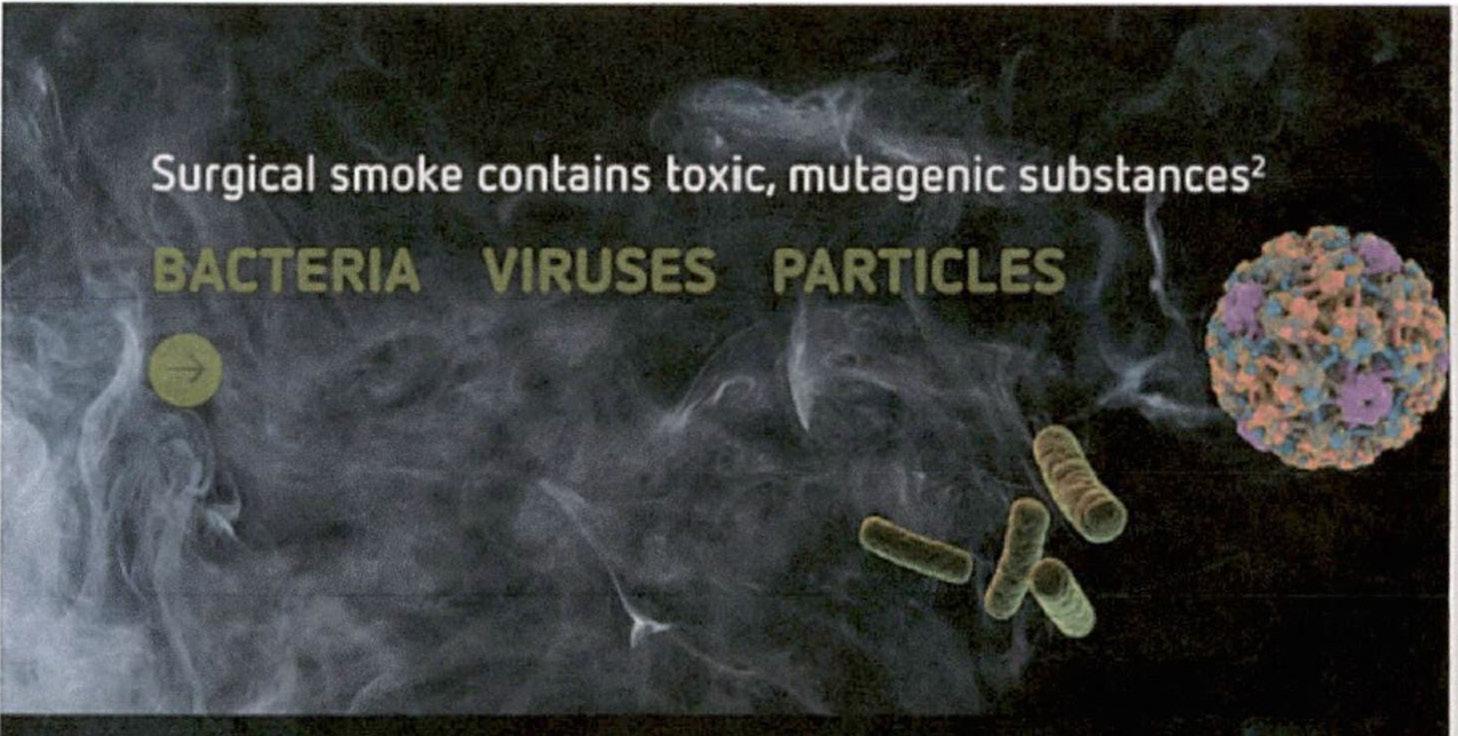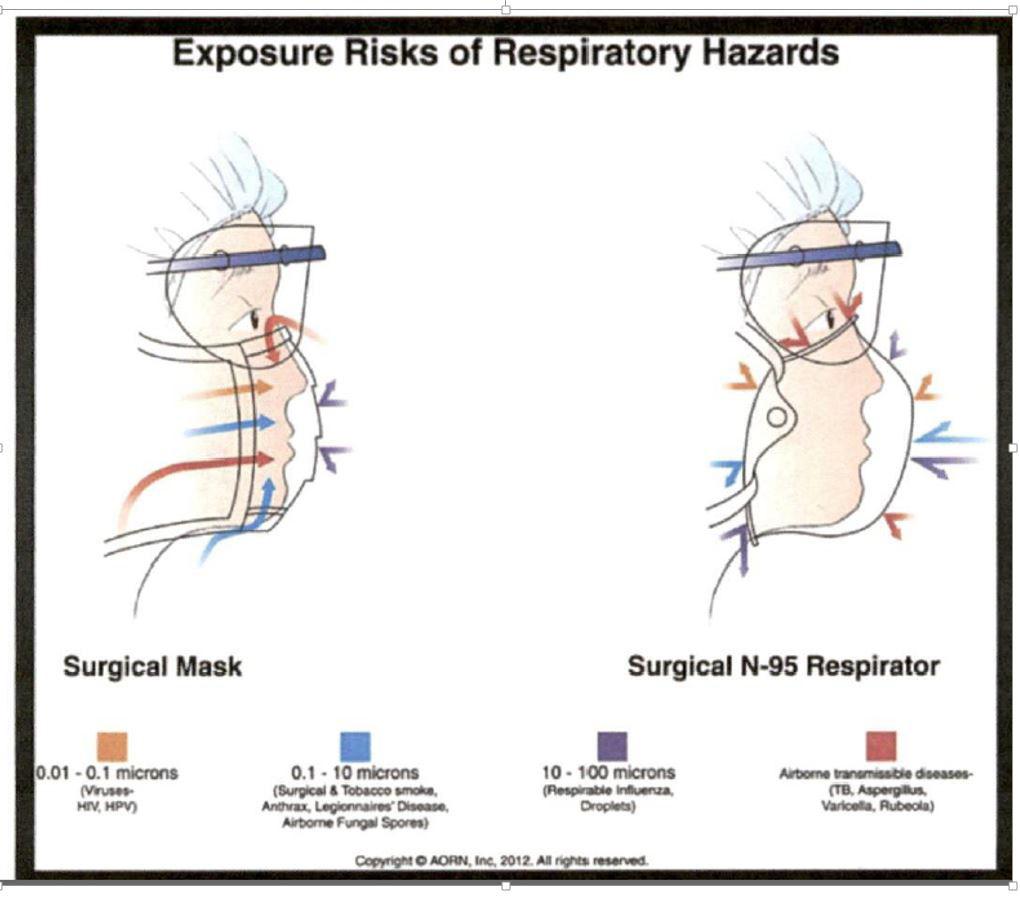
4 minute read
Control that Smoke
By: Melanie Brooks BSN, RN, CNOR University Medical Center in Lubbock, Texas
ABSTRACT: Safety precautions have advanced to safer and better prevention exposure to surgical smoke/plume for patients and healthcare providers through evidence based practice. The OR team is exposed to harmful elements such as: respiratory (the exchange of oxygen and carbon dioxide for breathing thus conditions such as asthma, bronchiolitis etc.), biologic, virus, carcinogenic (substance that causes cancer), cytotoxic (substance or process which results in cell damage), mutagenic (increasing its rate of change in organism’s genes), chemical, and gaseous toxic compounds from the smoke or plume from laser devices and powered energy generating units such as cautery. Studies have shown that inhalation of surgical smoke or plume can have as much or greater damage to the lungs as smoking cigarettes. Will the use of smoke extraction during surgery help reduce the risk of exposure to the toxic byproducts?
The Challenge What are the dangers of surgical smoke? Surgical smoke is the hazardous byproduct of surgeries that use lasers and energy devices that cause thermal destruction of tissue and creates a smoke byproduct. Research has confirmed that smoke plume contains toxic gases and vapors such as benzene, hydrogen cyanide, formaldehyde, live and dead cellular material (including blood fragments), and viruses. Lasers such as the NdYag, KTP, Holmium, Thalium, and CO2 are energy generating devices used in an air media along with electrical surgical units, drills, and generators increase the risk of smoke. Figure 1: A graphic depicting what can be found in surgical smoke. WHY EVACUATE? Particles inside the plume are smaller than 2.5 um, so small that the particles can be easily breathed in and penetrate the alveoli of the lungs. Studies have shown that surgeons, patients, and operating room staff in the immediate area of the surgical smoke are subject to exposure to high levels of particulate and chemicals. One study found that particles in surgical smoke can remain airborne for as long as 20 minutes afterwards
and the exposure is prolonged and the risk is increased. Plume has the potential to aerosolize live virus within the living patient such as HIV, HPV, and Hepatitis B. Research has shown that smoke inhaled from cautery or use of a laser on just 1 gram of tissue is equivalent

to smoking 6 unfiltered cigarettes.
Figure 2: A chart showing surgical smoke particle size.
Besides mitigating the risks associated with the physical, chemical, and biological components of surgical smoke, there are several other reasons to evacuate smoke plume including the following: • Surgical smoke created visibility difficulty during the operation, • During Laparoscopic surgery toxic compounds present in surgical smoke are absorbed into the body, • Medical staff have reported a number of symptoms associated with exposure to surgical smoke including nausea, headaches, sneezing, lightheadedness, dizziness, eye/nose/throat irritation, respiratory work induced asthma, and more respiratory illness, • Reports have established the relationship between
smoke exposure and health according to AORN
Association of Operating Room Nurses Figure 3: A chart explaining particle sizes of surgical smoke from lasers. The Solution The solution is to reduce the production of smoke, evacuate the smoke, and wear PPE (personal protective equipment. Some of the barriers that have been documented are the lack of smoke evacuators, no smoke accessories available such as laparoscopic filters, surgeons refusal to evacuate the smoke, smoke evacuator to loud or cumbersome, and competency or education deficits.. Some of the decisions to evacuate need to use a smoke evacuator with a 0.1 um filter. Medical-surgical vacuum system with an in line filter between the wall connection and the suction canister, position the capture device close to the surgical site, use of a filtered mask such as an N95 mask, room ventilation of 20 total air exchanges per hour, and use of administrative controls such as policies and procedures. Regular surgical mask have been documented as being non-effective in filtering particles in the operating room. This is a systematic control of risk reduction and protection for the staff and patient. Patients and staff are in a unique working area and all must participate in keeping the atmosphere as smoke free as possible. The key area of concern is the surgical suite and the team approach is important to reduce the exposure of surgical smoke by having all the requisite information and tools. The data clearly demonstrated

there is no such thing as safe surgical smoke. References: Association of Perioperative Registered Nurses. (2020) Guidelines for surgical smoke safety. Denver, CO: AORN, (pp. 1009-1030) Association of PERIOPERATIVE Registered Nurses. (2018) Guideline for surgical smoke safety. Denver, CO; AORN. (PP. 469-497) Fencl, J.l., (2017). Guideline implementation: Surgical smoke safety, AORN JOURNAL, (105). 5, 488-493

Figure 4: An image depicting the exposure risks of respiratory hazards comparing a Surgical Mask and a Surgical N-95 Respirator.
Meet the Author My name is Melanie Brooks and I have been a Registered Nurse for 44 years. I have a certification in the operating room and have been involved with the perioperative nursing field for over 40 years. I have been employed at University Medical Center in Lubbock, Texas for the past 10 years. I am involved as a deputy to our Laser Safety Officer, Team Coordinator for Gynecology, Urology, Opthalmology, Infertility, and Robotic surgeries at a Level 1 trauma center..










